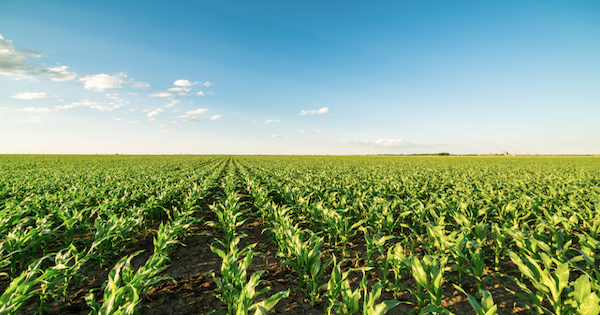Cornstalks can be a valuable source of forage for livestock, especially during winter or periods of drought when other forage options are limited or more costly. However, allowing cattle to graze on cornstalks requires advanced planning and active management to avoid both nutrient deficiencies and elevated nitrite exposure.
So, what does it take to successfully fill forage gaps with grazing cornstalks?
Grazing cornstalks refers to the practice of allowing livestock to graze on the crop residue that remains in cornfields after harvest or if the corn is drought-stricken and no longer harvestable. The number of grazing days per acre for cornstalks will vary depending on several factors, including corn yield, the amount of crop residue left in the field, and the weather.
Close monitoring is required to ensure cattle are receiving adequate nutrition, especially after the first 30 days of grazing on a field. Because cows naturally eat the most appealing and protein-rich parts of the corn plant first — the grain, husk, and leaves — there is no need to provide nutritional supplements during the first 30 days of grazing on a field.
But as the most desirable parts of the corn become scarce, cattle will begin consuming the stalks, which are more fibrous and harder to digest. Stalks contain approximately 45% total digestible nutrients (TDN), but beef cattle require 50-60% TDN, which means ranchers must provide supplements to make up the difference.
To estimate the number of viable grazing days for a 1,200-pound cow on an acre of cornstalks, divide the number of harvested bushels per acre by 3.5. For example, an acre of corn that yielded 125 bushels would provide enough forage for approximately 36 grazing days. However, to be on the safe side, it is best to estimate one acre per cow per month and plan to leave cows on the field for no more than two months to ensure optimal nutritional intake.
Along with monitoring livestock’s nutritional intake, it is important to measure the crops’ nitrate levels. Nitrates are naturally occurring compounds that can accumulate in cornstalks, especially if drought conditions damage the corn. Cornstalks should be tested for nitrates before allowing livestock to graze on them.
There are a number of tests that can be used to test cornstalks for nitrates. The most common test is the nitrate-nitrogen test. This test measures the amount of nitrate-nitrogen in the cornstalks. The results of the test are expressed in parts per million (ppm).
If cornstalks test positive for high levels of nitrates (generally over 2,000 ppm), you can still allow cattle to graze on them. But you will need to limit the amount of time cattle spend grazing cornstalks and watch for symptoms of nitrate poisoning, such as excessive salivation, weakness, and rapid breathing.
With preparation and planning, grazing cornstalks can offer a cost-effective way to fill forage gaps during drought conditions or winter months. If you need agricultural equipment to help set up grazing cornstalk pastures, John Deere has machinery for every job. Visit your local John Deere dealer for more information about reliable tools and equipment.
